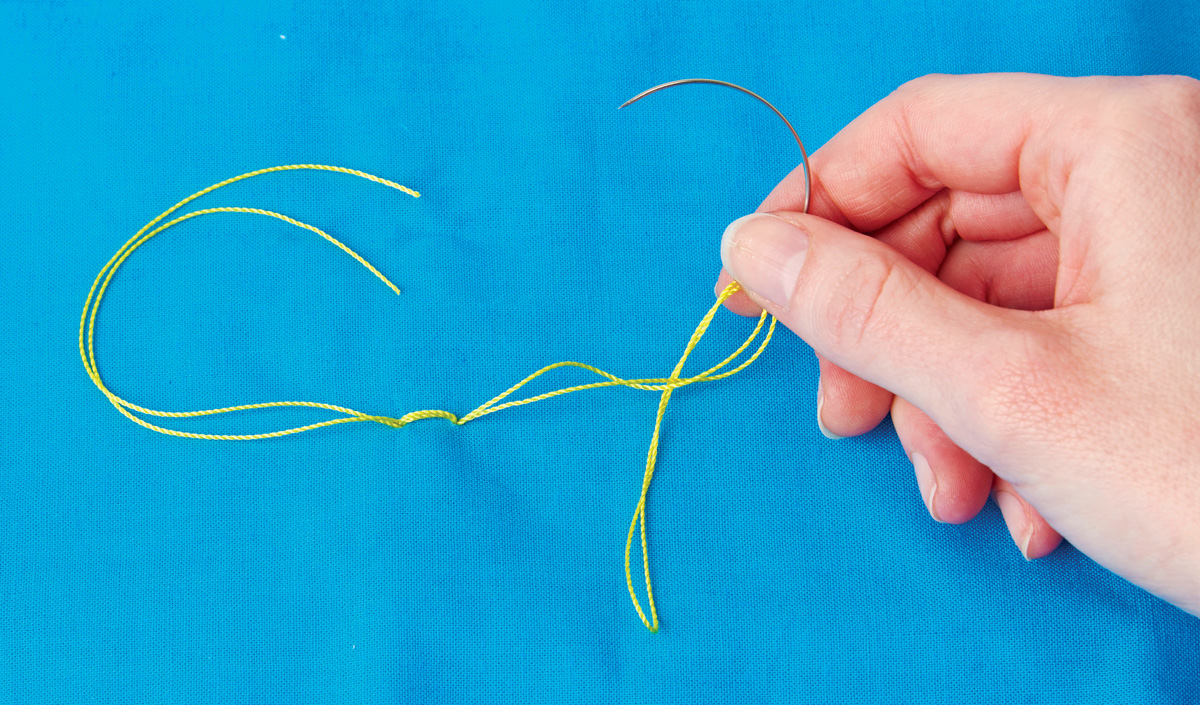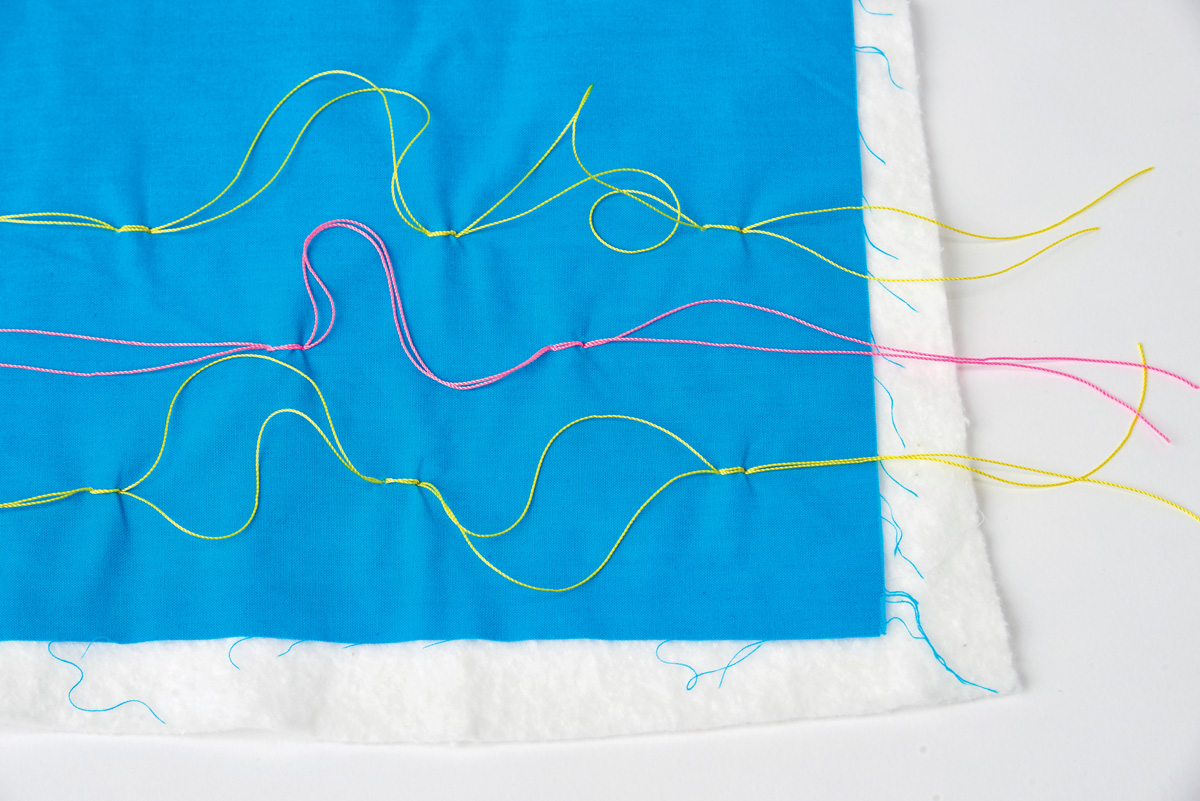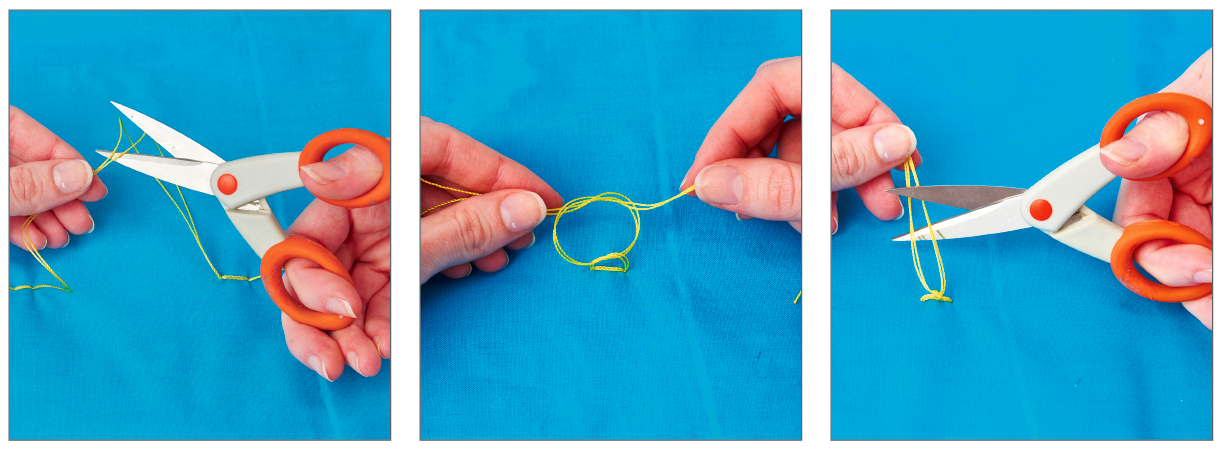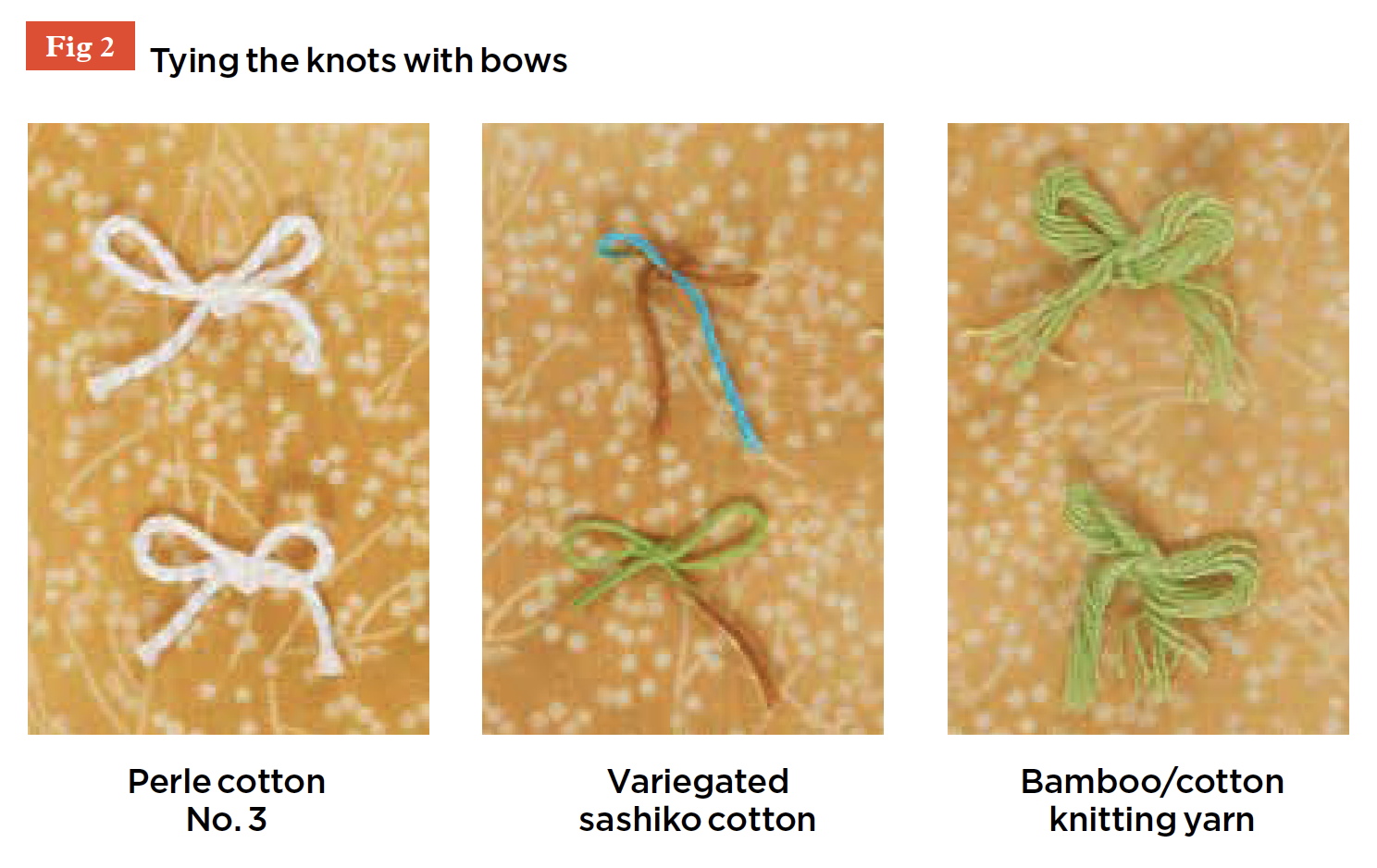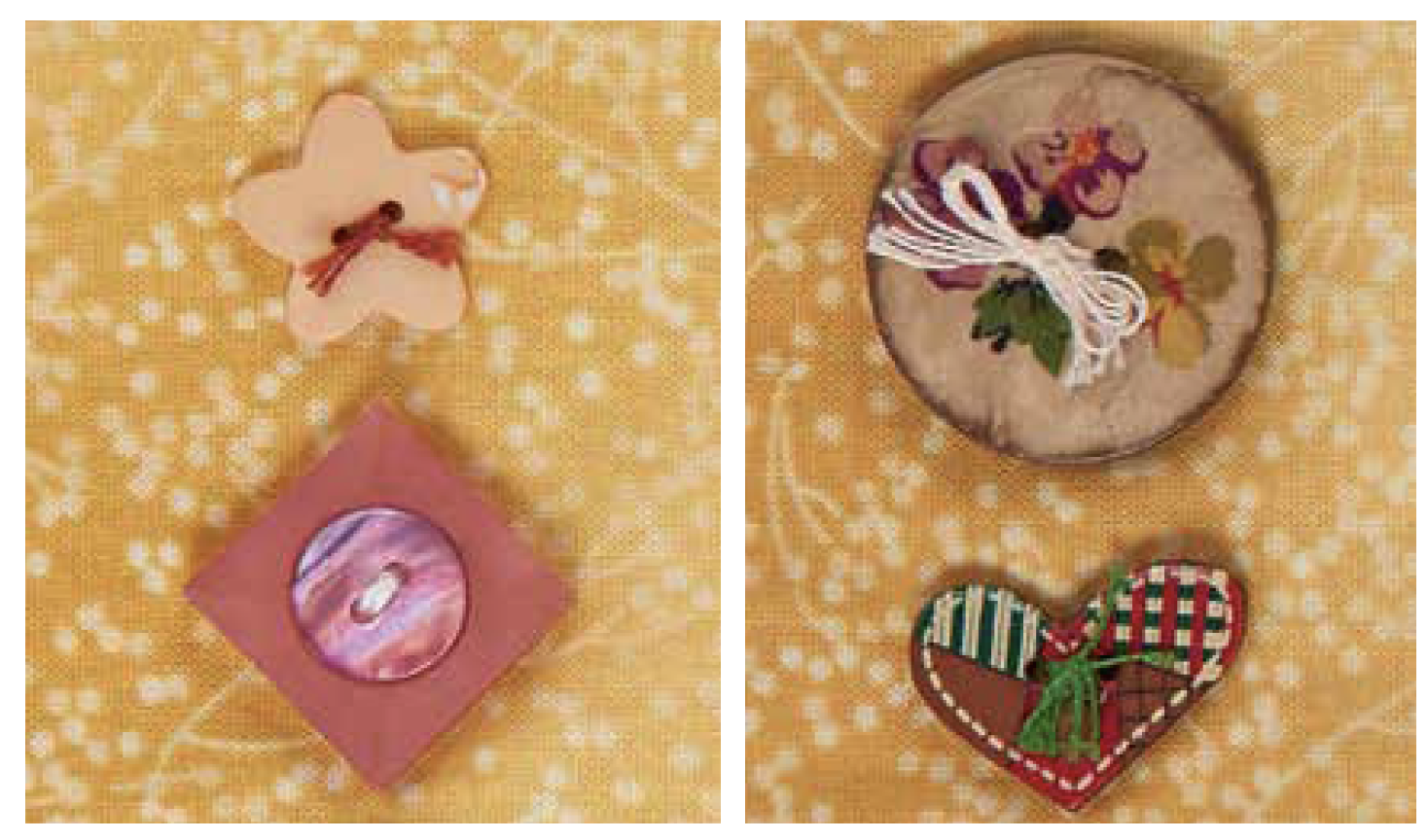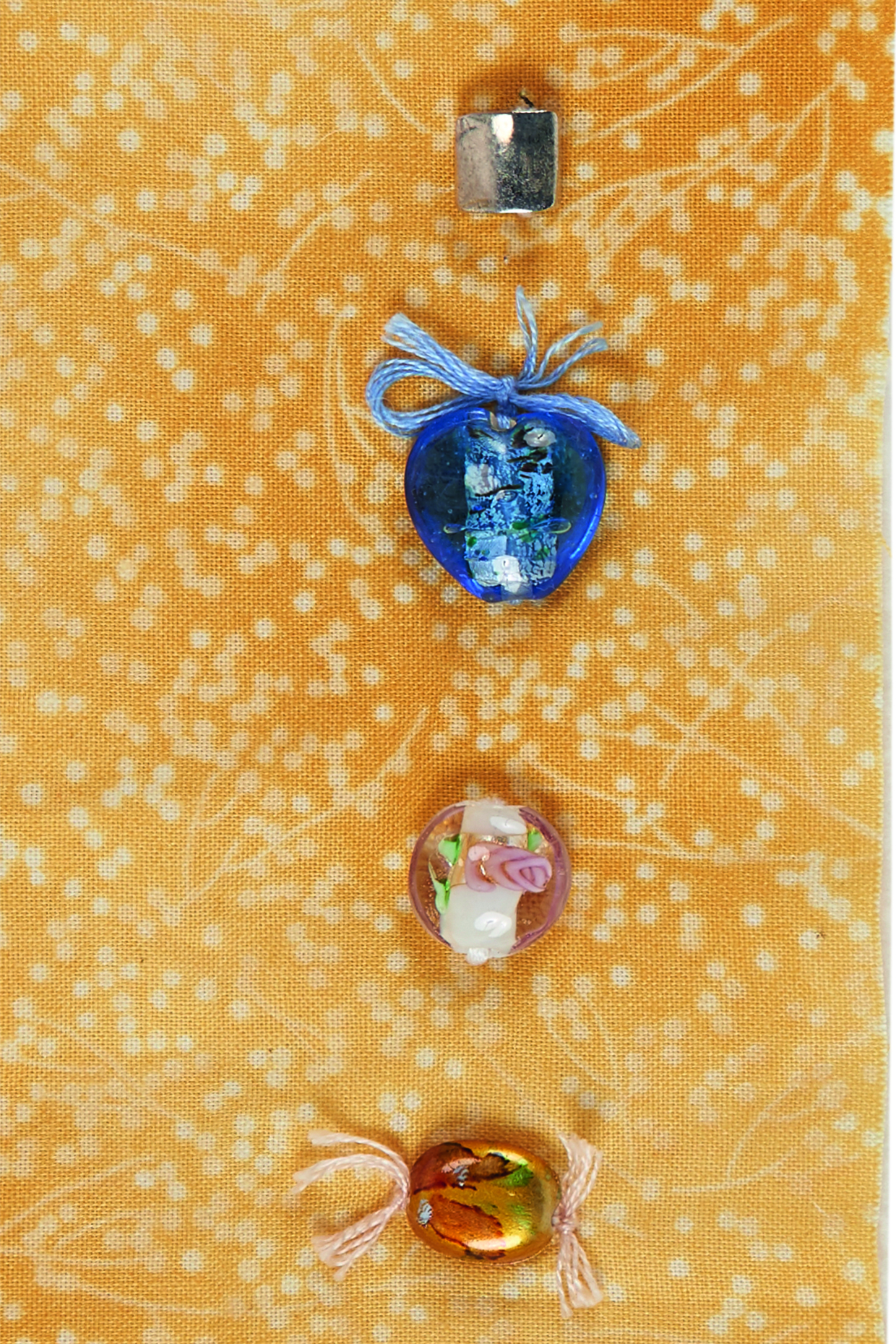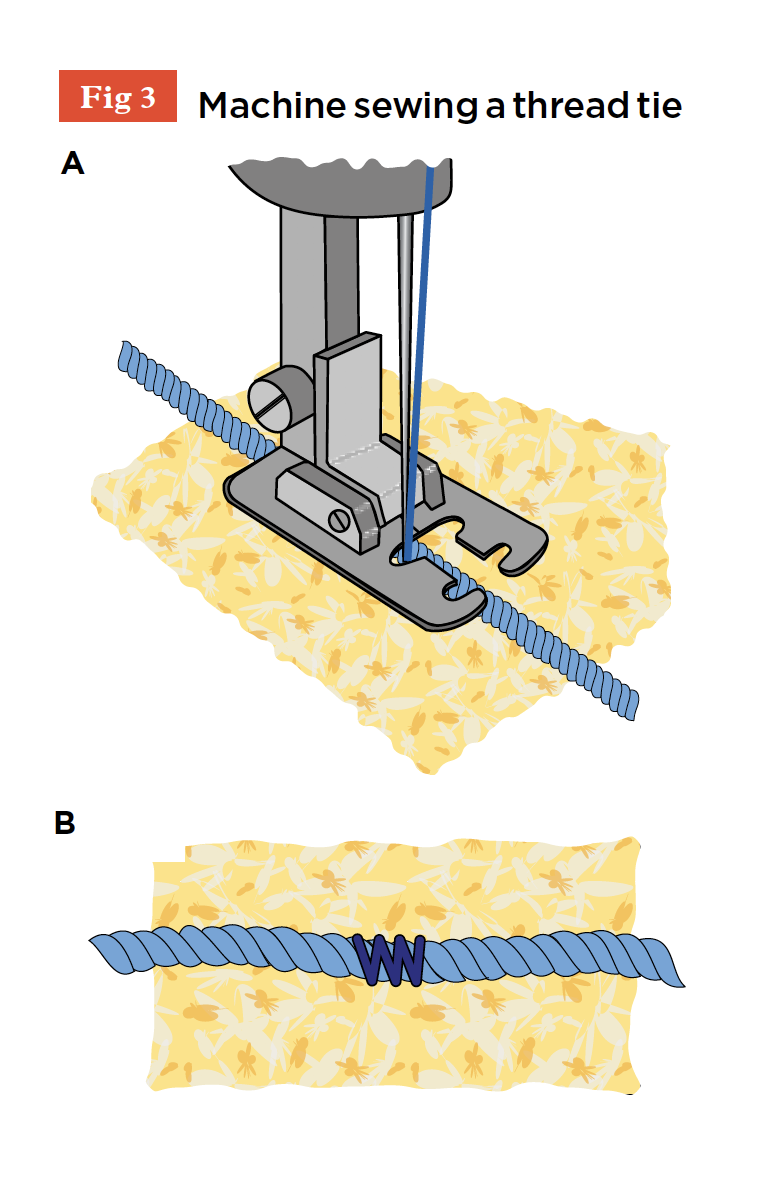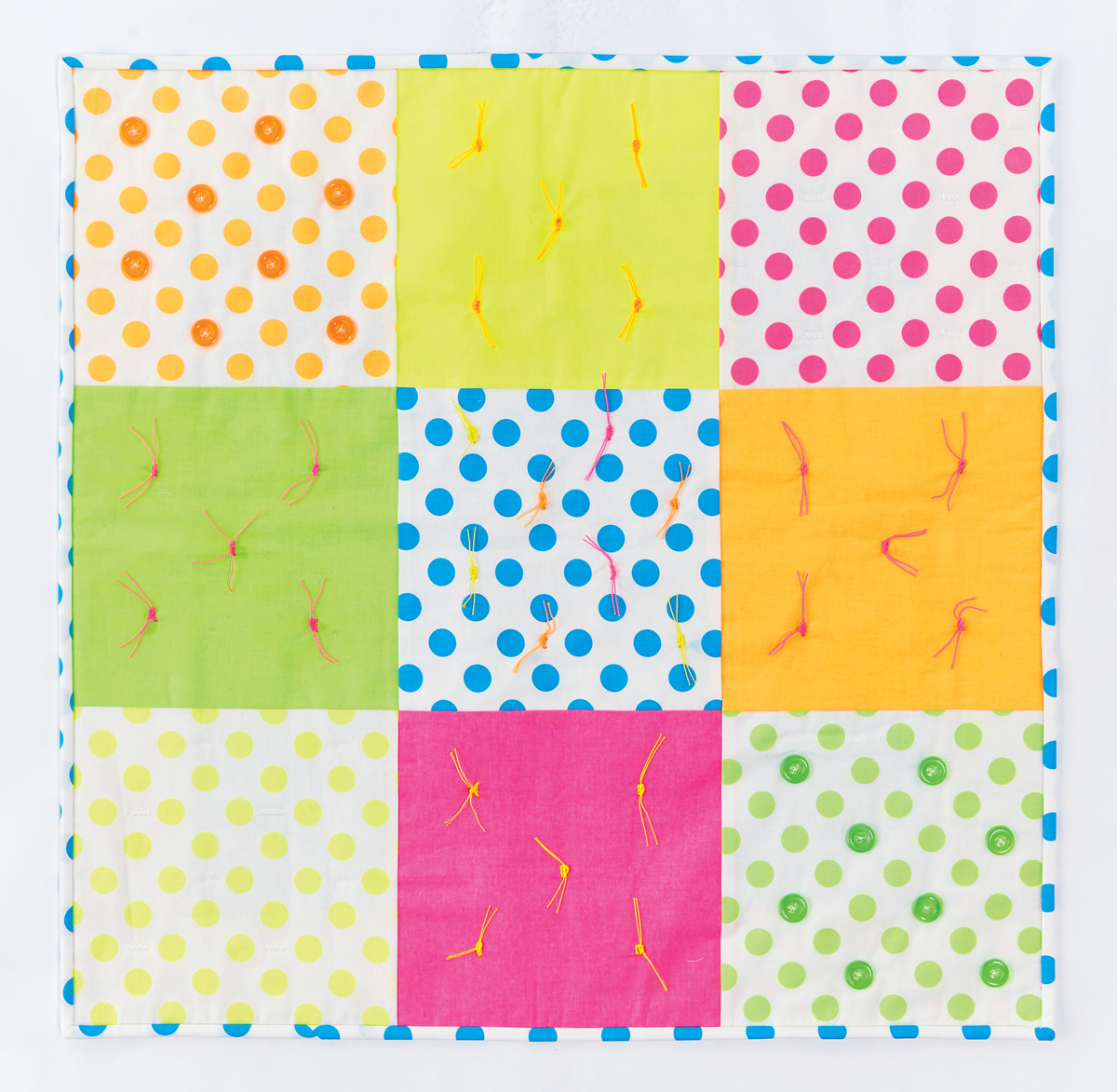How to tie a quilt
We're pulling together advice from the pros on our magazines Love Patchwork and Quilting and Today's Quilter to bring you this complete guide to how to tie quilts. Tied quilting can be used on any project and is useful on those that use thicker fabrics, or multiple layers. It’s a fun technique and can be creative too. Read on to find out how it's done, plus follow our instructions for how to make a bright and bold mini quilt project to try out what you've learnt.
What is tied quilting?
Tied quilting is a method of securing the layers of a quilt or project by tying them together. This can be achieved in various ways, which this article will explore. Machine and hand quilting are usually closely spaced, giving a flat appearance to a quilt, but tying the layers together is normally done at wider intervals, giving a puffier look. The knots can be tied on the front of the quilt or on the back and can be made in various ways, constructed to blend in or stand out as decorative features in their own right. Tying a quilt can also be done by machine.
Reasons to tie a quilt
There are various reasons why you might want to learn how to hand tie a quilt, including the following:
- It creates a distinctive and charming look to a quilt, with a puffier appearance than normal machine quilting.
- It’s an excellent method to use for a quilt with thicker layers, such as one made from wool tweeds or flannels (brushed cottons).
- Tying can be done by hand or by machine.
- A feature can be made of knots, for example, leaving long thread ends or tying in a bow.
- Tying can incorporate buttons and beads.
- Aesthetically, tying a quilt by hand gives it a different finish to machine quilting.
Which thread should you use to tie a quilt?
Threads that can be used for tied quilting can vary according to your project, your fabrics and the look you want to achieve. These might include standard hand or machine quilting threads, embroidery threads, wool or even ribbon. The material you use for tying will also depend on whether you are tying by hand or by machine, and both methods are described here. Whatever thread you use it must be strong enough to hold the quilt layers together without breaking. Thread colours can be matched to the colours used in your project or be chosen to contrast. Use a thread length sufficient to form a knot easily and also allow for a bow or long thread ends if desired.
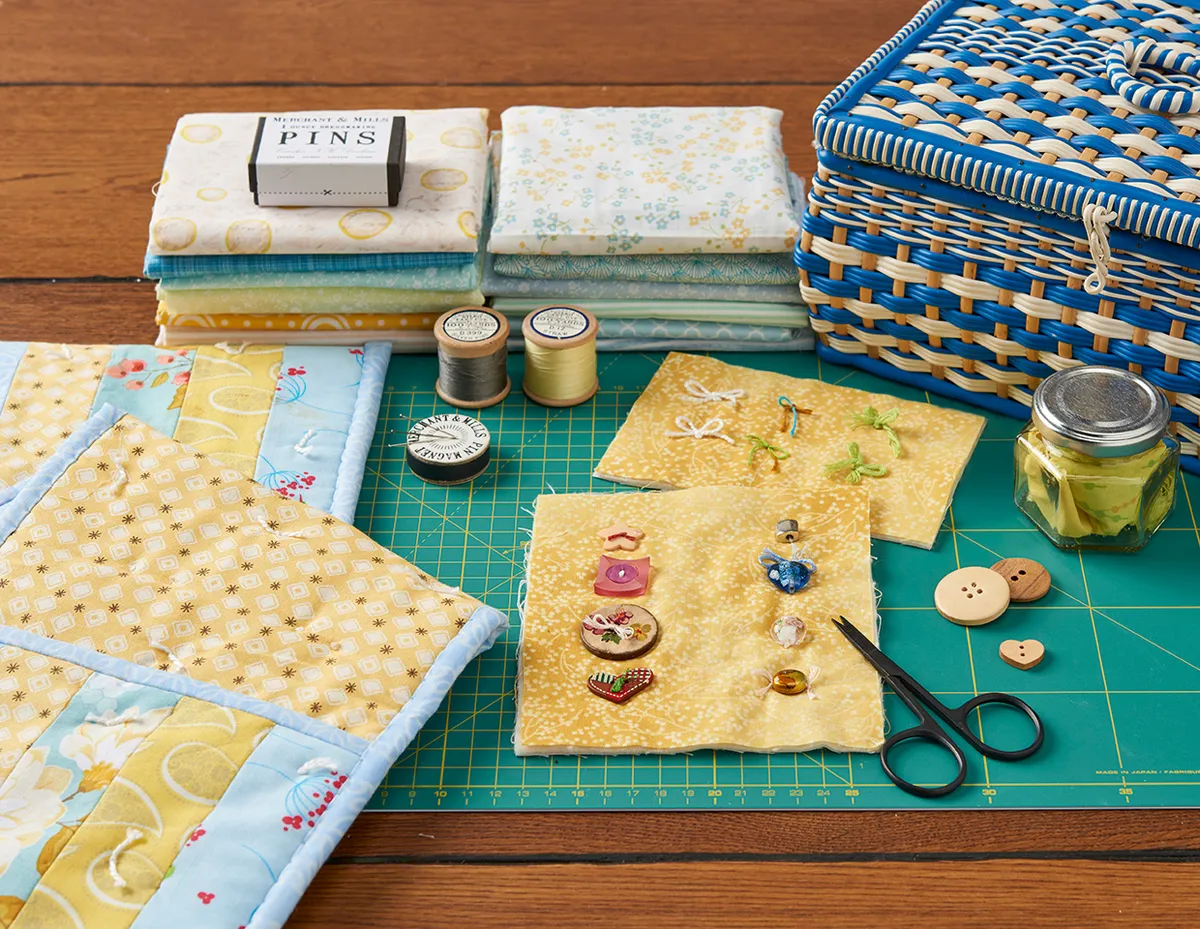
Where do you tie?
The positions where ties occur are up to you and will depend on your project and probably the blocks or the pattern of your patchwork. You also need to ensure that you are tying at the correct intervals for the wadding you are using. Seam junctions are useful places for ties, or in the centre of patchwork blocks or units. You could also aim to create patterns with ties, such as circles or on-point squares.
Take a look at your quilt top and decide where you would like the ties to go. It’s important to keep in mind how close your ties should be, based on the waadding or batting you’re using (check the label when you buy and make a note of the recommended quilting distance). If you’re not sure, it’s usually safe to place them about a hands width apart (4–5in).
You can work in an offset grid pattern for even coverage (Fig 1 below). Or use your quilt design as a guide, placing ties in the centre of blocks (Fig 2) or at corners over seams (Fig 3). If you want precise placement, you can mark your quilt with a removable fabric pen or for a more freestyle look, just eyeball the placement!
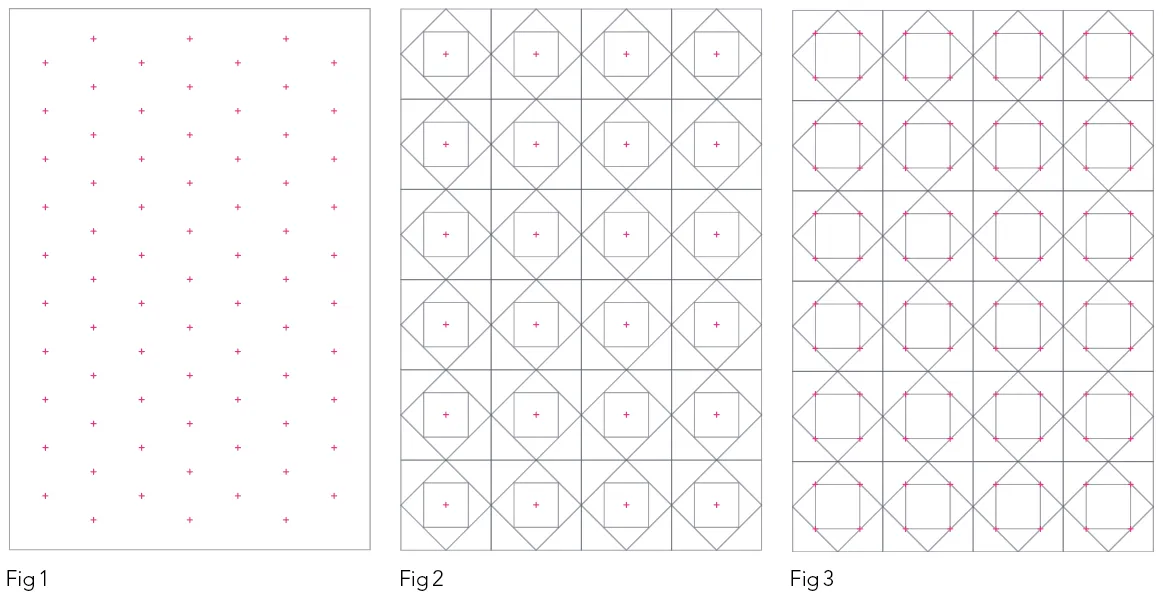
What is the minimum distance apart that ties need to be?
The spacing distance between ties depends on the wadding you are using, so check the manufacturer’s recommendations. Generally, the distance is between 3in and 8in − the looser the wadding, the closer the quilting needs to be. For example, a 100% cotton wadding could be quilted at about 8in apart, while a wool one would need to be more like 3in. It’s advisable to quilt (or tie) a little closer than the recommended distances, as this puts less stress on each individual stitch or tie.
How to hand tie a quilt – 5 ways to try
- Using simple, discrete knots with hand sewing thread.
- Using embroidery thread for tying or forming bows.
- Tying with thicker threads, such as wool or ribbon.
- Tying through buttons.
- Tying through beads.
How to tie a quilt by hand: simple knots method
The basic method is to hand sew a thread through all layers of the quilt, tie it in a reef knot and then trim the ends. The knots can be tied from front to back of the work, or vice versa.
Step 1
Pencil mark the place where you want the knot to be. Prepare a needle and thread. A thread length of 7in−10in is a comfortable one to tie and make bows with. Pass the thread through the layers of the quilt, from the back through to the front (or vice versa). Return again to the back, spacing the stitches about 1/8in apart (Fig 1A). You can do this twice or more if desired. Both thread ends should end up at the back (or front) of the work.
Step 2
Pull the thread ends snug against the work and make a reef knot − right over left and then left over right (Fig 1B). Tie the knot tightly and trim the thread ends or leave them a little long if you prefer.
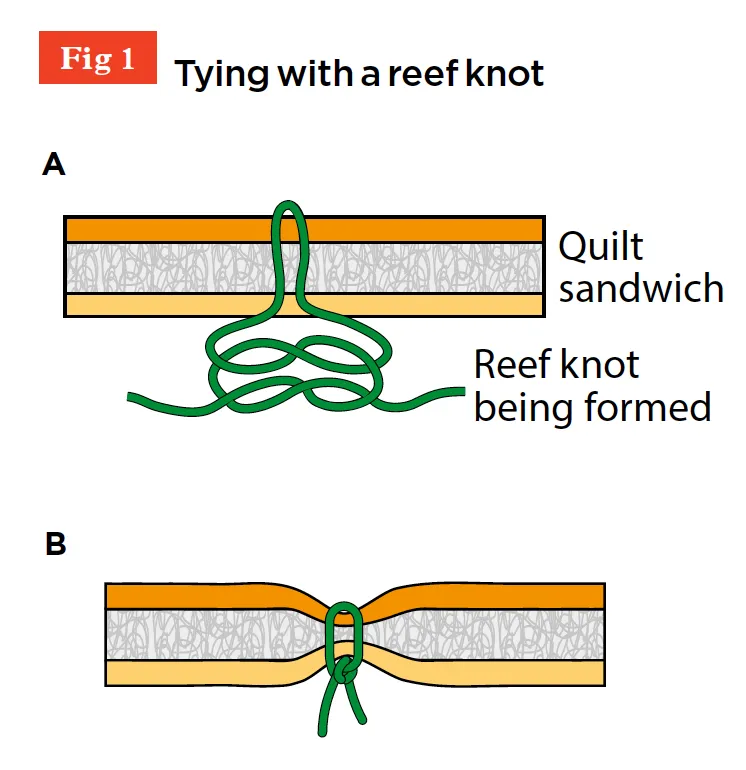
Top tip: If you wish, you could make a double knot. For extra security, add a drop of fabric glue over the knot.
